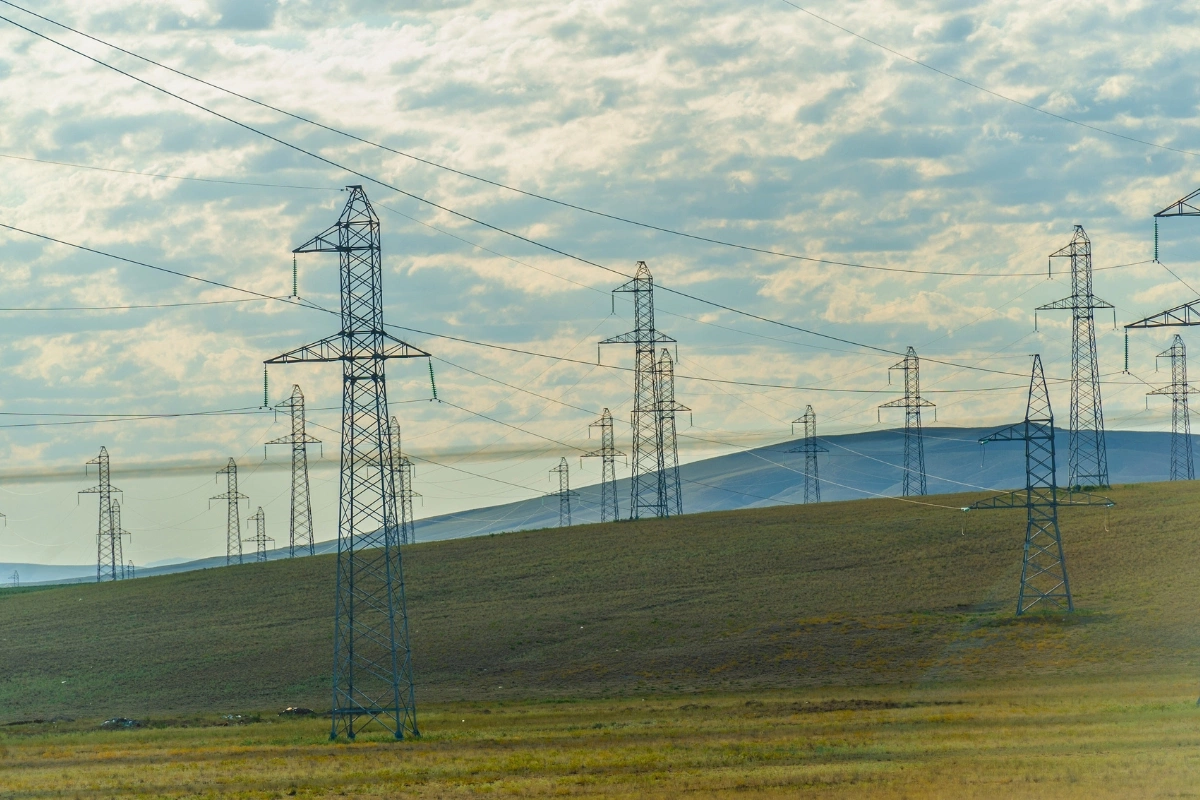
The European Union seen as the primary export market.
Image: Sergei Mishchenko/Shutterstock
(Eurasianet) Economic integration efforts among CentralAsian-Caspian Basin states are gaining momentum. Azerbaijan, Kazakhstan and Uzbekistan are developing a green energy plan to link their power grids with an eye towards exporting electricity to the European Union.
The energy ministers of the three countries announced the signing of a memorandum of understanding in early May to explore their joint electricity export potential by harnessing mainly wind and solar power. Kazakhstan is also aiming to boost its hydropower generating capacity. In outlining cooperation plans, the tripartite memo envisions the laying of a “high-voltage cable” on the Caspian Sea’s seabed. Technical specifications for such a transmission line have already been developed, according to Kazakh Energy Minister Almassadam Satkaliyev.
“A proposed business model will be developed for the development of international transmission corridors (financing, revenue flow and ownership) and for the sale of green energy to the countries of the European Union,” a ministry statement quoted Satkaliyev as saying.
The three countries have wasted little time in pursuing the plan. Satkaliiev said May 10 that a feasibility study was underway. He told journalists that the EU had given the budding consortium an expression of “interest in purchasing clean electricity.” The feasibility study will work out construction and financing details and is expected to produce preliminary estimates by the end of the year. It is too early to put a price tag on the project, or the amount of power exports involved.
“We are talking about a fairly large amount of investment,” Satkaliyev said.
The effort to foster trans-Caspian connectivity inherent in the tripartite memorandum dovetails with an economic blueprint proposed by the United States, dubbed the B5+1, under which Central Asian states take the initiative in breaking down regional trade barriers and forging new networks to boost trade and investment. Since the B5+1’s inception in March, Central Asian states have taken steps to simplify trade rules. The tripartite memo marks a significant step in promoting regional cooperation extending beyond Central Asia to span the Caspian Sea.
The goal of exporting electricity to the EU fits in with plans unveiled by all three countries to significantly expand renewable energy generating capacity in the coming years.
The chief catalyst for power exports is Uzbekistan, which aims to generate an additional 20 Gigawatts (GW) via renewable sources by 2030. Meeting that target would raise the country’s total renewable capacity to 27 GW. By April, the government had signed deals to develop wind and solar facilities projected to produce 12 GWs. In May, Uzbekistan entered into contracts for another 6 GW.
“Increasing the efficiency of the energy industry is relevant for our entire region,” Uzbek President Shavkat Mirziyoyev said during a Tashkent investor’s forum in early May.
Kazakhstan and Azerbaijan seem destined to play more of a facilitating role in the power export arrangement. Given its abundance of fossil fuels, Astana’s renewable goals seem more modest than Uzbekistan’s. Kazakhstan currently generates about 2.9 GW of power via renewable sources, and hopes to add at least another 5 GW by 2030, according to Satkaliyev. Much of that capacity may be needed at home, however, as Kazakhstan grapples with a power deficit that saw the country become a net importer of electricity in 2023.
Azerbaijan has a target of generating 5 GW of solar and wind power by 2030. The MoU Baku entered into with Kazakhstan and Uzbekistan potentially builds on a 2023 agreement that Azerbaijan concluded with EU states, including Hungary and Romania, to export power via an underwater cable traversing the Black Sea with a capacity of 1,000 Megawatts. The feasibility study for the Black Sea project was conducted prior to Russia’s unprovoked invasion of Ukraine in 2022, thus raising questions about its viability under wartime conditions.
Share on social media